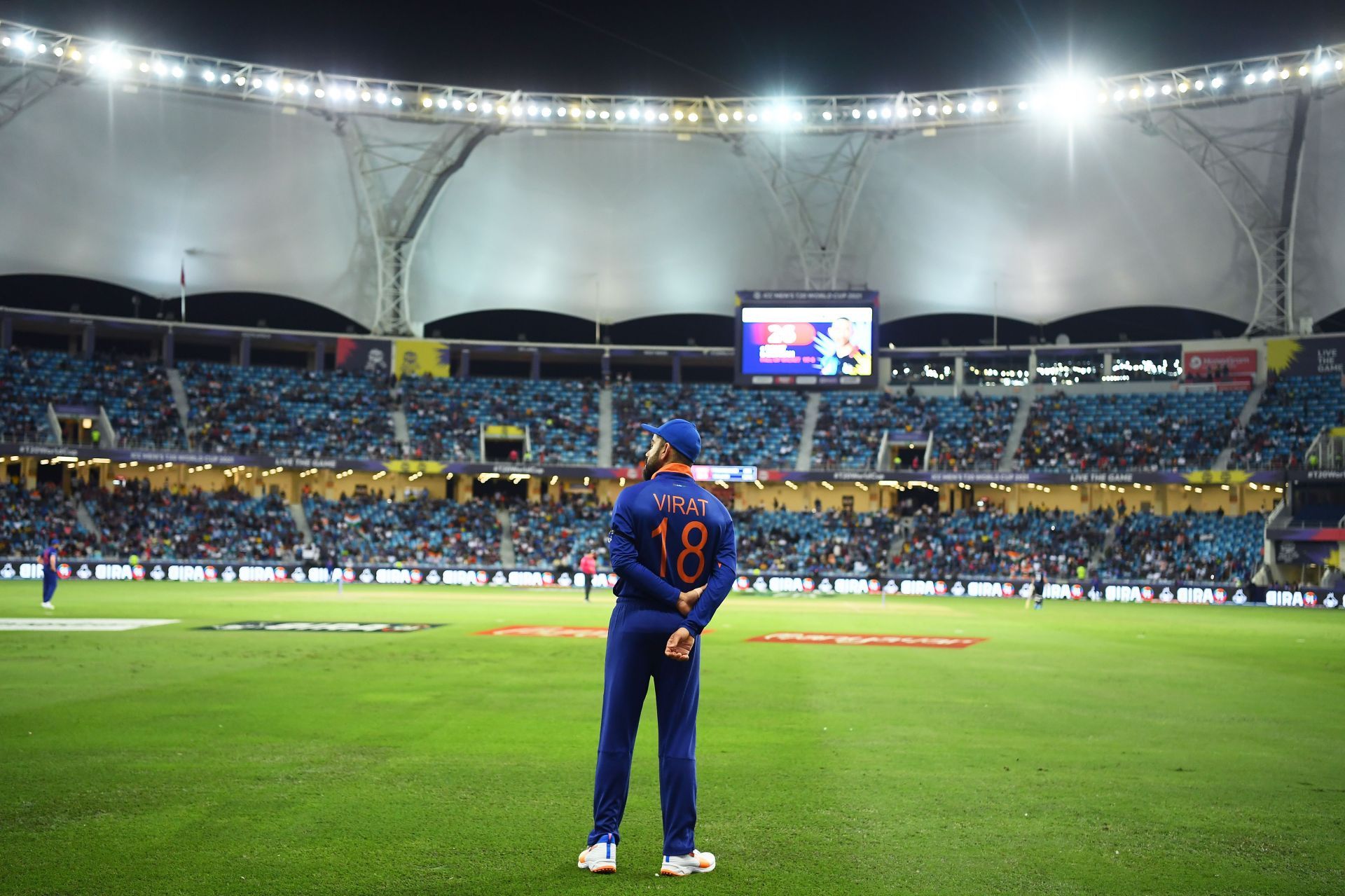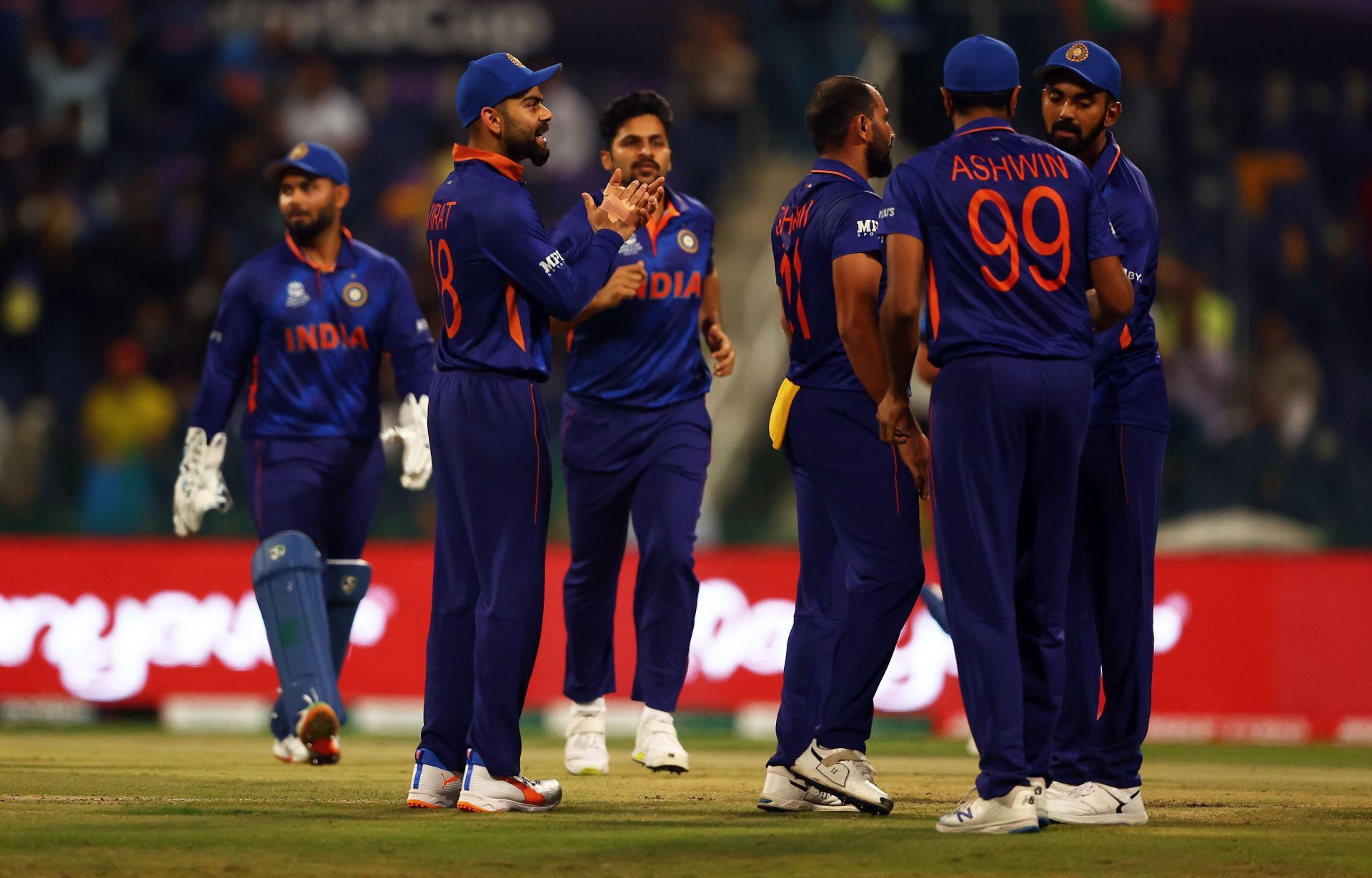
India's T20 World Cup woes: How much break is too much (less) break?

In a utopian world, India would still be in the UAE, preparing for a defining semi-final clash against either Australia or England. They would be receiving effusive praise for the talent pool at their disposal and for the way Virat Kohli has led the team, despite announcing in advance that this was going to be his last hurrah.
The Indian players, who have been on UAE shores over the past couple of months, would’ve used their knowledge of the conditions excellently. They wouldn’t just have had more firepower than the opposition, but also would’ve had well laid-out strategies and better contingency plans.
Instead, India are now packing their bags to return home – a journey they wouldn’t really mind considering how long they have been on the road for. But a journey that would’ve felt much sweeter had they punched according to their weight and had some silverware to show for their efforts.
Over the past few days, there have been numerous explanations and theories regarding why the T20 World Cup worked out the way it did. Some have criticized the batting unit (rightly so too), others have gone in hard on the bowling attack. Some (read Bharat Arun) have also suggested that “win the toss, win the match” was prevalent during the T20 World Cup.
While there is a bit of truth attached to most of those comments, it was perhaps a brace of comments (made by Bharat Arun and Ravi Shastri) that actually made people sit up and take notice.
The bowling coach and head coach, respectively, quipped on the break between the IPL and the T20 World Cup. Funnily enough, both offered different takes on the same issue - something that feels a lot more ludicrous each time you read it.
For those wondering, Shastri opined that India needed more time away from the game post the IPL, whereas Bharat Arun suggested that a short break between the IPL and the T20 World Cup would’ve “done a lot of good for the boys”.

But more damningly, it opened up a can of worms – a can of worms the BCCI knew would surface when they announced the second phase of the IPL back in May 2021.
At the time, the decision was met with optimism, for the IPL had just been suspended and fans wanted to see their favourite franchises in action. As the dust settled, though, it became increasingly clear that it was to the detriment of India’s players.
Also Read: IPL resumption shows that the BCCI gets its way, even at the players' cost
Not just because they would be playing non-stop cricket for two months but also because the IPL is hardly ideal preparation for a T20 World Cup. Prima facie, it might seem paradoxical, considering the IPL is the best T20 league in the world.
Yet, if history is used as an indicator, it becomes clear that an IPL edition, just before a T20 World Cup, spells trouble.
In 2009, India made that mistake. They didn’t even qualify for the semi-finals. A year later, they rescheduled the cash-rich league so that it didn’t clash with the T20 World Cup. They flattered to deceive again and were dumped out before the penultimate stage.
Those two tournaments, by the way, were won by sides that had minimal players playing in the IPL. Pakistan attained glory in 2009 and England did so in the Caribbean. England, back then, weren’t accommodative of their players participating in the IPL. Kevin Pietersen can be asked to testify for that too.
Even this time out, Pakistan had zero cricketers playing the IPL (rather unsurprisingly), England had most of their first-choice players opting out of the second phase, New Zealand barely had any representation, whereas Australia’s frontline bowlers (barring Josh Hazlewood) were preparing themselves for the long haul.
Thus, it is fair to say that India got this awfully wrong. Again, blame can’t really be attached to the players or the support staff. As Shastri indicated, even Sir Don Bradman’s bubble would’ve burst had he had to undergo so many quarantines.
The more pressing question, however, is why were they made to do so?
At first, it is very easy to say that India’s first-choice players could have opted out of the IPL – like some of their English counterparts had done. The issue is that these cricketers are the heartbeat of their respective franchises.
For example, it might not be very easy for Kohli to rock up to the RCB management and tell them that he won’t be available for the entire second phase. Or for Rohit Sharma to do something similar at the Mumbai Indians. Again, franchisees might indicate that they remain empathetic to such requests. The bare fact, though, is that it is practically not feasible.
The other problematic part about an IPL before the T20 World Cup is that players are always looking ahead. While these cricketers have played enough to know when to switch off, it becomes extremely tough if they are having to plan for two tournaments at the same time.
Initially, it compromised their IPL performance – as it happened with a major chunk of India’s selected fifteen. Not many apart from KL Rahul, Ravindra Jadeja, Shardul Thakur and Varun Chakravarthy had campaigns to shout about. And, those who did were already on the plane back to India.
India looked visibly drained against New Zealand and Pakistan
The knock-on effect is that these players then arrived at the T20 World Cup low on confidence and form – something that drastically came to the fore in pressure situations against New Zealand and Pakistan. Both oppositions were marvelous in patches but didn’t produce anything that India couldn’t handle.
Yet, they triumphed so convincingly. That, plus the fact that India were then relying on Afghanistan to do them a favour, illustrates how far things went south in the first place.
Thus, as India’s cricketing community grows more introspective, it seems quite astonishing that the T20 World Cup was put in jeopardy to ensure that the IPL show went on. Again, there isn’t a lot wrong in that (in isolation at least), it perhaps ignored that the cricketers are humans – humans that need to live life away from the hassles of bubbles and quarantines.
The fans are right in expecting India to go deep into the T20 World Cup. They are even right in expressing their disappointment (the vile social media comments aside). The players too, are right in finding reasons to explain an inexplicable humbling.
Similarly, the support staff is right in questioning other factors such as the toss and bio-bubbles to confront an unexpected and unforeseen reality. The elephant in the room now is why they were forced into a situation where they had to furiously rummage for solutions that simply didn’t exist.
The cricketers could certainly have done with a break, irrespective of how long or how short it was. It doesn’t answer how much of a break is too much/too less of a break but it is a break nonetheless.
It also tells India’s top brass that T20 World Cups shouldn’t be taken lightly. And of course, that a utopian world rarely comes to fruition, especially when other teams have planned out their itinerary better.
As India’s top cricketers prepare to board the flight back home, they might do so with a bitter-sweet feeling. Sweet because they are finally moving away from the bubbles. Bitter because this trend doesn’t seem likely to change in the near future. That is perhaps the most unfortunate bit too.
